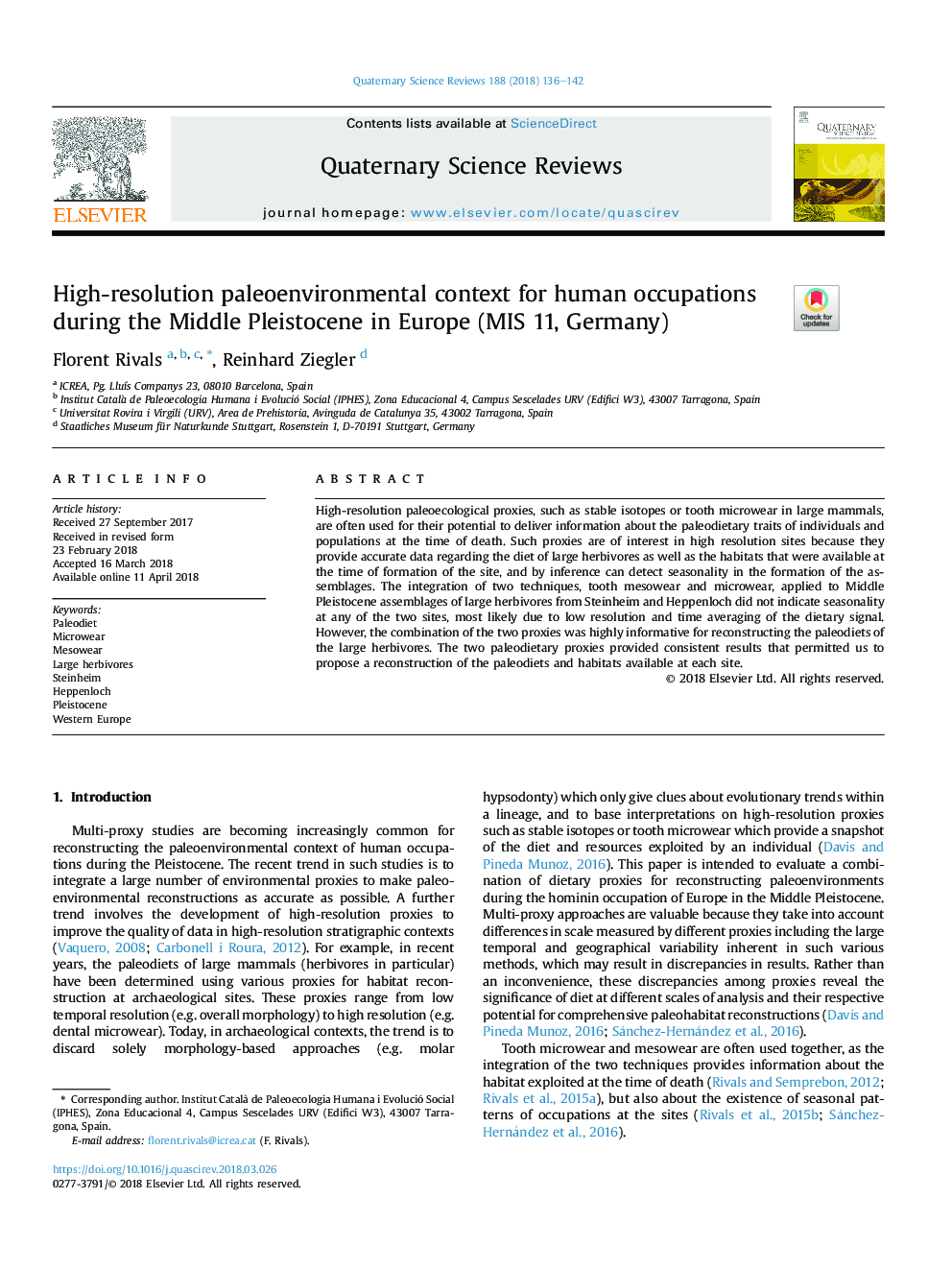| Article ID | Journal | Published Year | Pages | File Type |
|---|---|---|---|---|
| 8914852 | Quaternary Science Reviews | 2018 | 7 Pages |
Abstract
High-resolution paleoecological proxies, such as stable isotopes or tooth microwear in large mammals, are often used for their potential to deliver information about the paleodietary traits of individuals and populations at the time of death. Such proxies are of interest in high resolution sites because they provide accurate data regarding the diet of large herbivores as well as the habitats that were available at the time of formation of the site, and by inference can detect seasonality in the formation of the assemblages. The integration of two techniques, tooth mesowear and microwear, applied to Middle Pleistocene assemblages of large herbivores from Steinheim and Heppenloch did not indicate seasonality at any of the two sites, most likely due to low resolution and time averaging of the dietary signal. However, the combination of the two proxies was highly informative for reconstructing the paleodiets of the large herbivores. The two paleodietary proxies provided consistent results that permitted us to propose a reconstruction of the paleodiets and habitats available at each site.
Related Topics
Physical Sciences and Engineering
Earth and Planetary Sciences
Geology
Authors
Florent Rivals, Reinhard Ziegler,
